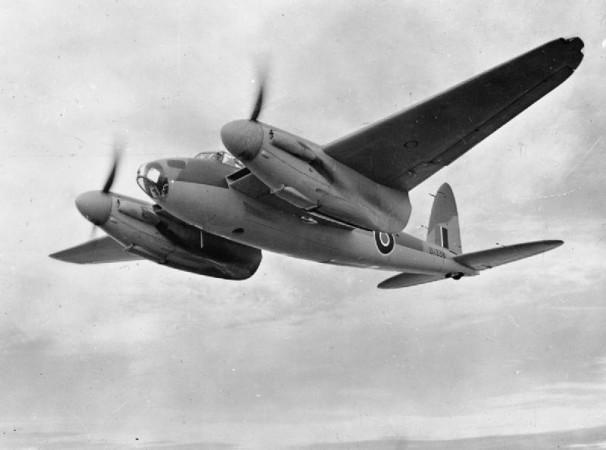
One of the most effective British fighter bombers of World War II, the de Havilland DH.98 Mosquito, was made almost entirely out of wood. The twin-engined multi-role aircraft went by the nickname 'The Wooden Wonder' and was even used after the war.
Only three such Mosquitos remain airworthy, though there are about 30 non-flying Mosquitos around the world.
A group of aviation loyalists, the People's Mosquito, have now come together to restore this flying machine and bring it back from the dead, War is Boring reported. This UK-based charity is targeting the restoration of an ex-Royal Air Force Mosquito which crashed in 1949. The aircraft was recovered in 2010.
The group, who want to see a de Havilland DH.98 Mosquito flying in the UK again have raised over £40,000 (target is £7 million) until date, according to its website. Speaking about the restoration, the group's Director of Engineering and Airframe Compliance, Ross Sharp, told War is Boring that "that was due, I think, because it performed so many roles and performed them superbly."
The People's Mosquito are restoring an NF.36 — a night-fighter version that had US-made AI.Mk X radar and two powerful Rolls-Royce Merlin 113/114 engines. The aircraft had crashed near RAF Coltishall in Norfolk after both engines suffered failures soon after taking off. Though recovered, the pieces of the aircraft are "almost entirely unusable."
So, the group are building it from scratch. They will build a Mosquito FB.VI variant, a highly-configurable fighter-bomber. The aircraft will feature fresh airframe, wings and engines, known as data plate restoration. It will, however, contain some non-structural bits from the original.
"It's going to be mostly new parts, of course, which in a predominantly wooden aircraft like the Mosquito is vital," Sharp agrees.
Another reason why it has to be rebuilt is that the glue that holds the fuselage decays overtime. So, they have to build a new fuselage. The team is in possession of the original blueprints, thus helping it in building a better one. They also have modern tools and laser cutting to aid them.
The Rolls Royce Merlin engines which Mosquito uses is still available and the team also has access to world's only existing Mosquito fuselage molds.
The team hopes to make the new plane indistinguishable from the old. They will be using the same wood from the Canadian forests that were used in the original aircraft.
"We would not under any circumstances dream of altering Sir Geoffrey de Havilland's vision, or even try to reinvent the wheel. That's not going to happen," Sharp said.
Nevertheless, the aircraft that they will be building will feature several upgrades to suit the modern skies and that means they have to make room for electronics, communications gear and anti-collision systems into the crammed space.
The team is likely to install four screwed-in gun barrels, but are unlikely to install Mosquito FB.6's four nose-mounted .303 Browning machine guns.
The team is still in its early days of building the aircraft and is seeking donations and volunteers. Once complete, the team wants it to have it to go on a travelling display and looks to reconfigure it for different roles to match the Mosquito's multi-role nature.
The report notes that repainting the aircraft in different configuration will be an expensive affair.















